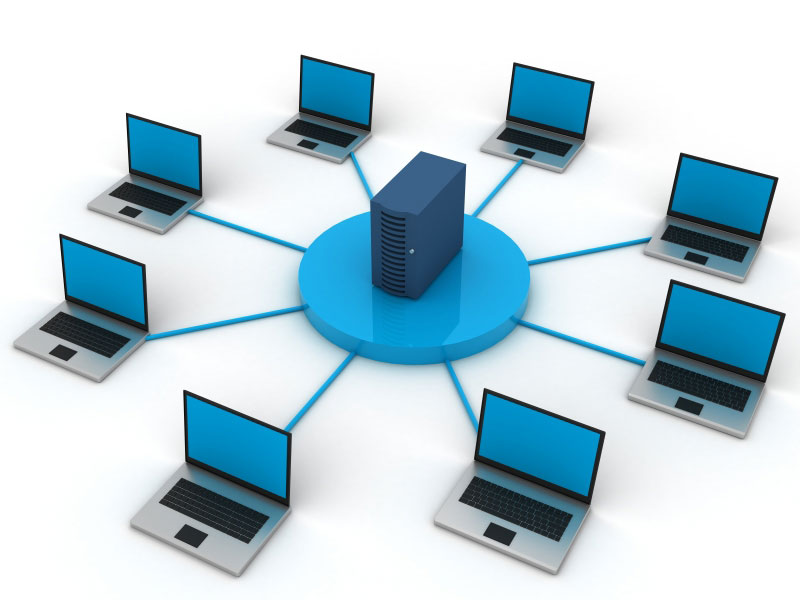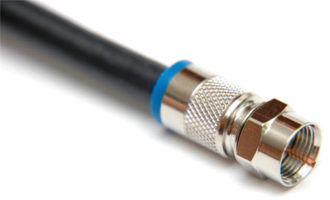Computer Network and its components:

A COMPUTER NETWORK can be defined as a group of computers and other peripheral devices that are linked together for the purpose of sharing data and hardware resources. For example, if one of the computers in a network has printer attatched to it, then all the computer in that network can access the printer and use it to print the documents you need,
The computer in a network can communicate with each other as well as work independently. Each computer in a network is called a node. one of these acts as a a sender that transmits the information to other nodes in the network known as Receivers. These computers are linked with each other through some medium, such as cables telephone lines,radio waves, or in infrared light beams.
Let's understand it by image:

It consists of the following parts:
- MESSAGE- It is a information to be communicated. It can contain text,pictures,audio, video,etc.
- SENDER- Sender is a device that helps computer,workstation,mobile phone that sends the data message through web browser
- Receiver- Reciever is a device that recieves the data message. It can also be a computer,workstation,mobile phone.
- Transmission Medium- It is a physical path through which the message travels from the sender to the receiver.Twisted pair cable,fiber-optic cable and radio waves are some common example of the transmission medium.
- PROTOCOL- A protocol specifies a set of rules that governs the data communication. Without a protocol, the data cannot be exchanged between two communicating devices.

ADVANTAGES OF NETWORKING:
Networking in computer brings efficiency,economy and effectiveness in an organisation.
Efficient use of storage Media:
It is more economical to store an application software on an network drive than to store a copy of the application on each user's storage device. It is a better to have one big hard disk in the server than to small hard disks in different computers
Preserving Information:
It is difficult to maintain regular backups on a numbers of stand-alone computers. When you keep backups on a central location,you have one place to look for the lost information.
Reduction in Hardware costs:
In a network, the hardware devices that are used often lie modems, printers ,scanners, CD- writers,etc., can be shared.This reduces the total expenditure on hardware.
Efficiency:
In a network, the deletion,modification, or Upgradation of the software/data is to be done at single point only This brings more efficiency and effectiveness into the working system.
Reduces:
A network reduces the need for hard copies of all documents. Sharing the soft copy of a file over the network eliminates or greatly reduces the need to share the hard copies of reports or any other information.
Quickest Documents Delivery:
Networking provides a facility to instantly delver soft copies from one computer to the another computer throughout the world

Networking Media:
Data can be transmitted from one location another by using wires or without the use of wires.
Mainly the Network media of two types:
- Wired Networking Technology: Data that is transmitted by any wire or data cable is known as Wired Networking Technology. Nowadays, this mode of transfering data is not much used.
We can do wired network through following ways:

- Ethernet cables- An Ethernet cables is one of the the most popular form of network cable used in wired networks. This cable ressembles a phone cable, but is larger than the phone and has eight wires.Ethernet cables connect various devices such as PCs, routers and switches within the a local area network.The advantages of these cables is that they have less power consumption , but the drawback with these cables is that the computer requires an Ethernet adapter card on the motherboard to connect the Ethernet cable. These cable also have their limitation, both in the distance that they can stretch without losing signal quality and their durability.
There are mainly two types of Ethernet cables:
Crossover- Cable: It is basically designed for connecting two computer without a hub or router.
Straight -through cables: This type of cable has got its ends identical to each other. It is used to connect a computer to router or a switch.

Coaxial Cables:
A coaxial cable is used in the transmission of video, communication signals, and audio. It is mainly used by the cable television industry to connect TVs to a cable TV service. However, this cable can also be used in networks and has bandwidth and greater transmission capacity. A Coaxial cable consists of center copper wire surrounded by insulation and then a shield of braided wire.It is inexpensive and can transmit data at higher rates. It also provides better protection against electromagnetic disturbances. The only disadvantage associated with coaxial cable is its high installation and maintenance costs.
The two main types of coaxial cable are:
Baseband Coaxial Cable: It supports quick transmission of a single signal at a time. It mainly used for LANs.
Broadband Coaxial Cable: It transmits multiple signals at the same time and is used for longer distances.

Optical Fiber Cable:
Fiber optics is a popular technology that has a larger capacity to transfer data at a very high speed. A Fiber optic cable consists of a central glass core containing a bundle of glass threads, surrounded by several layers of protective materials. The glass threads are capable of transmitting data covered into light signals at extremely high speed. A fiber optic cable is highly resistant to signal interference and provides better data by transmission by providing high bandwidth.Presently, a fiber optic cable is a popular technology for local area networks. But in the future, almost all communication will employ fiber optics. However, it is a fragile and maintenance cost is high.
Wireless Networking technology:
- Bluetooth: Bluetooth is a communication technology that uses low power radio waves to connect electronic devices wirelessly. It allows users to talk and share information like voice,music, and videos. It establishes short range communication between two phones computers and other network devices. It is a mainly used for personal area networks with a maximum transmission range of upto 240 meters depending on he bluetooth version in use. This technology eliminates the use of cables and adapters. The presence of Bluetooth icon indicates that the device is enabled with bluetooth.

2. Infrared Technology: Infrared technology is a short range communication technology that covers approximately 5 meters of distance.It is used to exchange information between computers,cellular telephones, and faxes by emmitting infrared waves through infrared LEDs. Infrared communication can take place only between two devices at a time. Infrared network signals cannot penetrates walls or other obstruction and work only in direct line of sight. These waves or signals are focused into a narrow beam through plastic lens, which is further converted into electronic signals by the Receiver. Remote control is the most common example of infrared communication.
3. Wi-Fi: Wi-Fi stands for Wireless Fidelity. It creates a wireless local area network that uses the radio waves to send the information. A secure, reliable and fast wireless connection is established between the electronic devices and the internet by using the this technology. The devices require a wireless adapter connected to them to capture the Wi-Fi signals.
ADVANTAGES OF Wi-Fi:
- Wi-Fi has replaced the wired medium completely and can be used to connect to the internet anywhere, at any time.
- It is relatively inexpensive and can also be accessed at places where cable connot be installed.
- One can connect multiple devices through wi-fi.
But it has some limitations too:
- It has high power consumption.
- It is slower than wired medium
- The transmission breaks or slows down when their is noise interference
Types of Network:
Depending on the geographical area covered by a network, there are various types of computer networks used world wide, which are as follows:
- PERSONAL AREA NETWORK(PAN)
- LOCAL AREA NETWORK(LAN)
- CLUSTER AREA NETWORK(CAN) ALSO KNOWN AS CAMPUS AREA NETWORK
- METROPOLITAN AREA NETWORK (MAN)
- WIDE AREA NETWORK (WAN) COMMON EXAMPLE- telecom system
LET US UNDERSTAND BY THE IMAGE:






